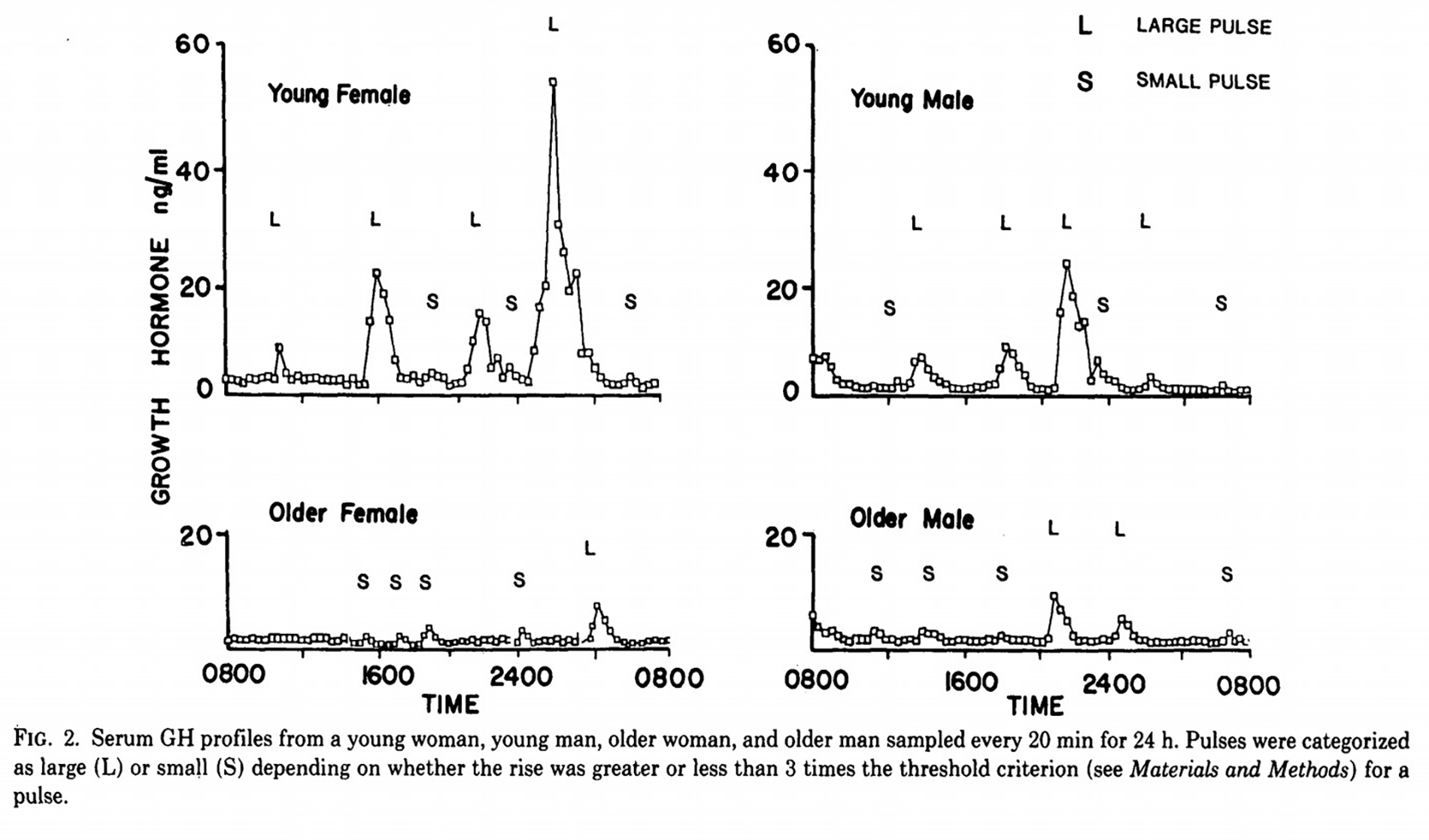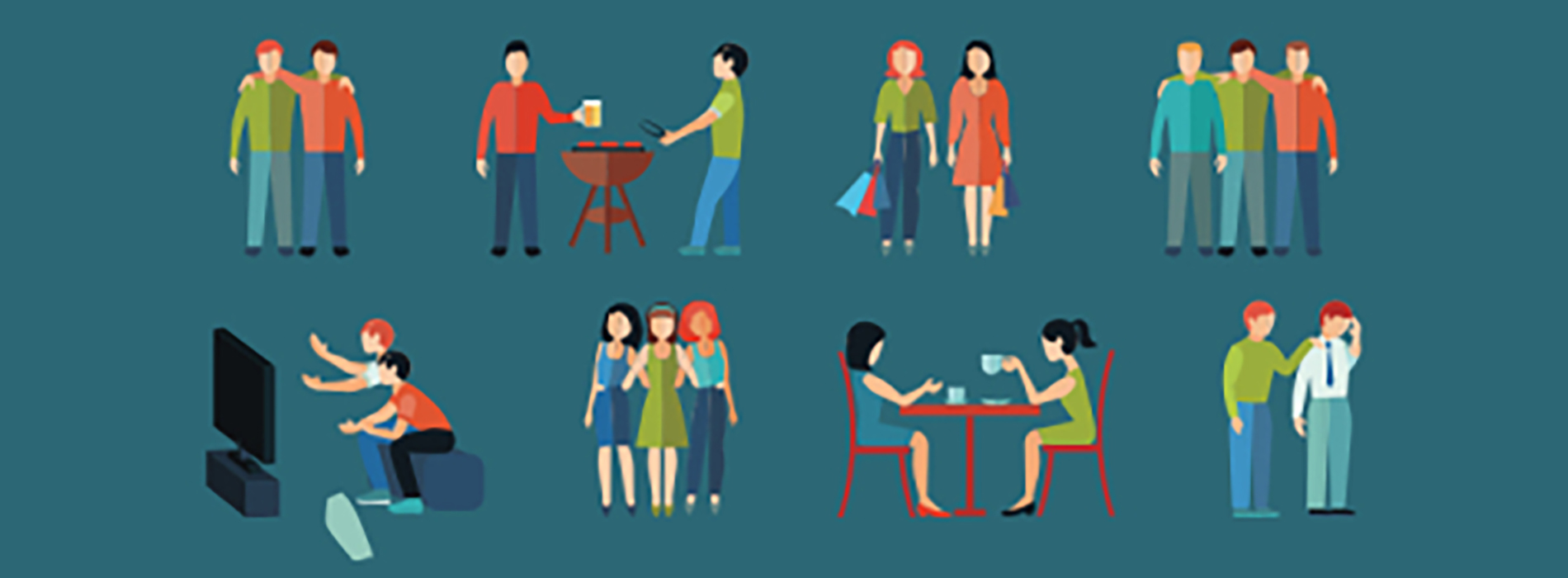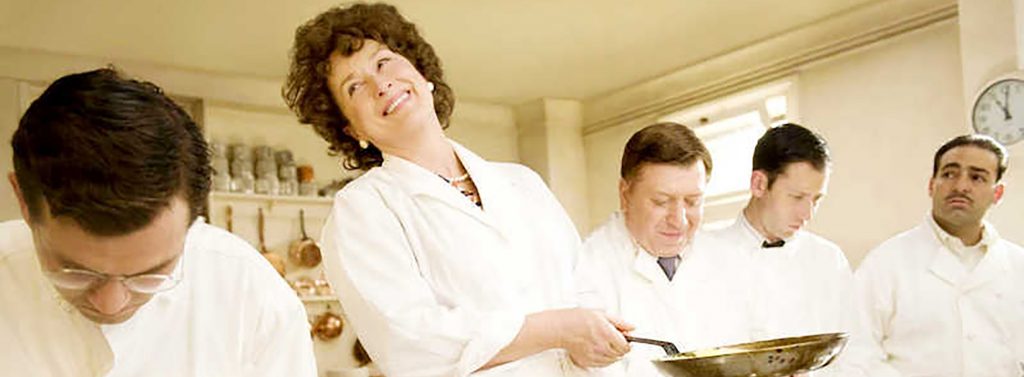Women’s diets need to change to take account of different needs as we age. In particular we need to re-balance after the metabolic onslaught of menopause. But it is important to see healthy eating as a means to an end and not an end in itself. A healthy diet will give us more energy, it will help maintain body and mind so that we can continue to enjoy life.
This is the final blog in a series about healthy ageing. In the space of these six shortish articles I have tried to condense the basics of healthy eating for women of a certain age; post-menopausal women. After the age of fifty, we all change. But we do not all change at the same rate and in the same way. Whatever your health, your state of mind or your physical ability right now, I hope I’ve convinced you that it is worth paying new attention to your diet. As we glide towards New Year, you might find some inspiration in this last article that will help you make a few New Year’s resolutions that will be easy and enjoyable to honour.
What ageing means for our bodies
It would be wrong to see women’s ageing simply as a function of hormonal changes. The classic graph, which shows the difference between oestrogen levels in women and testosterone levels in men, related to age, is deceptive. This graph accurately reflects fertility, but it doesn’t reflect what are actually rather similar overall hormonal losses in men and women. Growth hormone is probably a better marker of healthy ageing, and while men do generally have higher levels than women throughout life, the differences are small, especially when weight and height are taken into account. Growth hormone fall-off with ageing is not sudden in women. Both men’s and women’s growth hormone levels follow a similar, more gentle, pattern of decline.
In addition, it should be noted that levels of growth hormone vary considerably throughout the day and night. In ageing, both men and women lose the high secretions during deep sleep that are thought to trigger nightly cell renewal and bodily repair[1]. In both men and women many changes gradually occur during life. As we age it takes more energy to fulfil the same tasks. I’m talking about daily tasks such as walking a mile, or an hour’s brain work, but I’m also talking about bodily tasks like fighting off infection, or repairing wounds and damage[2].

As we age, we simply can’t afford to put too much stress on our digestion. The system becomes progressively more sensitive and can malfunction more quickly. The consequences of not eating well will directly affect digestion and absorption, but the knock-on effect will indirectly change the whole body.
Healthy eating is a prerequisite for healthy living, but the benefits of a healthy diet will not be fully harvested unless other aspects of life are in balance. That means:
- Maintaining an inquiring mind
- A rewarding social life
- Plenty of fresh air and sunshine
- Exercise and physical activity
Maintaining an inquiring mind

The most important seat of bioelectrical activity is within the brain and central nervous system. Here electrolytes such as sodium (salt) and potassium (from foods like bananas) continually exchange charged ions, triggering tiny electrical spikes, called action potentials. This allows brain signals to be transmitted. It also contributes to the laying down and retrieval of memory, impacting on reasoning, thinking and mood. The constant pumping of positively charged sodium and potassium ions in the brain accounts for the overwhelming majority of our energy consumption[3].
If we are to eat well, we also need to use all those wonderful chemicals that contribute to keeping our brains, more than any other human organ, in use. The brain cells of an older person are among the oldest of mammalian cells on the planet. Brain cells last a lifetime and despite so much discussion of dementia and Alzheimer’s disease, the majority of older people retain much of their brain power. Older people continue to amass wisdom, even when they can’t always remember where they put the house keys!
Keeping the brain going means retaining our involvement with life. Reading, watching the news, voting, campaigning, learning and creating, all exercise the brain. Whatever you enjoy doing, do more of it. Even so-called time-wasters such as social media and quizzes are probably good brain food.
A rewarding social life

Last week I talked about the social aspects of eating with family and friends. Improving our social life can have very beneficial effects on health. Now is the perfect time of year to think about changes to our social structure. It may sound trite, but it is universally true that joining clubs and classes or volunteering for groups and causes can reap many social rewards. Continuing to use the creativity and problem-solving capacities of our brains is very important as well. Many older people decide that they have the time and capacity to give back, either in voluntary work, or in taking jobs where their knowledge and life-experience can be put to good use.
Plenty of fresh air and sunshine

Fresh air
When we make lists of healthy eating, we so often leave water off the list. And we hardly ever consider oxygen. Yet it is the element that is as critical to a healthy lifestyle as any other. Many studies have shown that we are enervated by being in a natural environment. And many theories have been put forward to explain that fact. Certainly, green space is more calming and more relaxing to be in[4]. But the increased presence of oxygen in a natural landscape should not be overlooked.
When you are planning your leisure time, when you are thinking of walking from A to B, consider the greenest route, which might of course be from C to D?
Sunshine
Sunshine is another important life force. We all know that spending too long in the sun can lead to skin cancers. It is the most prevalent form of cancer in the UK today. But spending some time in the sunshine, especially if you live in temperate climes, is an important aspect of health. Women in particular will need extra Vitamin D, as they age, to counteract the effects of bone depletion. We do derive some vitamin D from food, including oily fish, red meat and eggs as well as grass-fed dairy products. However, this source is unreliable and seasonal. Spending about 15 minutes in the sun each day, without sun-screen, can help to top-up vitamin D reserves, especially if we can uncover arms or legs. The sun on our skin breaks down a naturally occurring oil, cholesterol, and converts it to vitamin D. Everyone is different and the strength of the sun is different every day, so this is a relatively haphazard way of getting vitamin D. However, there is evidence to show that as we age sitting in the sun a little more – while being careful not to get sun-burned – could contribute to health. Vitamin D has many uses in the body. It is vital to bone and muscle growth. In addition, research has linked deficiencies of vitamin D to muscle wasting diseases such as multiple sclerosis, autoimmune diseases, common cancers, cardiovascular disease, kidney disease, as well as chronic and acute infections [5].
Many older people have low levels of Vitamin D and take supplements, either all year round or in the winter, when sun exposure is not enough. I take a 10microgram/day supplement myself during the winter months, preferring to rely on sun exposure during the summer.
Exercise and physical activity

Muscle and bone
Even though we think of muscle and bone as immutable, in fact, they are both changing constantly. From day to day muscle and bone are degraded during exercise. This is important because the natural degradation of muscle fibres due to normal activity, provides the site for new muscle to grow back, bigger and stronger than before. Damaged cells can be cleared away and new cells are grown. This is one of the reasons why calcium and protein should be increased in an older person’s diet. Diminishing muscle and/or bone make us vulnerable to life-threatening frailty. Without calcium and protein, the basic building blocks of bone and muscle, bone and muscle maintenance cannot occur.
In addition, after menopause, the hormones that help to trigger muscle and bone re-construction, such as growth hormone, are reduced. Many people know about osteoporosis, where bone degradation exceeds bone repair. Less people are aware of the equally debilitating effects of muscle loss (sarcopenia), or of the symbiosis between muscle and bone health which means that we ignore one to the detriment of both. Yet most of us can recognise someone who is suffering from muscle wasting. Weakness, sunken eyes and stick-like limbs are very noticeable factors. Even Shakespeare observed these signs and symptoms as harbingers of death,
The sixth age shifts
Into the lean and slipper’d pantaloon,
With spectacles on nose, and pouch on side,
His youthful hose well sav’d, a world too wide,
For his shrunk shank, and his big manly voice,
Turning again towards childish treble, pipes
And whistles in his soundAct 2 Scene 7 of As You Like It
Healthy eating is an important piece of the jigsaw puzzle of healthy ageing – but it isn’t the whole story. Good nutrition is not enough, in itself, to maintain strong muscle and bone. The adage, ‘Use it or lose it!’ could not be truer for post-menopausal women.
Types of exercise
Resistance exercise
Weight bearing, or resistance exercise is the gold standard for maintaining strong muscles and bones. For as long as we can, the received wisdom, reflected in government and NHS advice is that we should take part in muscle building activity. Twice a week is adequate. Such exercise might be ballet, yoga, Pilates, tai chi or routines around weighted gym equipment. Though remember that you need to engage all your muscles, so if you decide to use gym equipment, make sure you are well advised about whole body exercise, mimicking the way that muscles might be used in everyday life. Resistance exercise doesn’t have to be an adjunct to life, it can become a normal part of life. It encompasses everyday activities that require us to lift, move or push against weights such as carrying shopping, decorating, housework or gardening. Bending and lifting safely are skills that can be easily learned and easily let go. Don’t fall into the habit of letting others do these things for you.
Metabolism
Nutrition isn’t simply about providing the raw materials for new cells. When we eat we are ingesting the fuel that powers the body from brain to big toe. Our bodies are supremely adapted to convert many different foodstuffs into energy. Principally that energy is derived from the carbon content of carbohydrate and fats. Over-consumption of these fuels leads to storage of their basic elements as fat in adipose tissue. When we require extra energy, the pancreas releases insulin, that in turn triggers a release into the bloodstream of triglycerides (fats) from inside adipose tissue. That is our fatty tissue breaking down.
Metabolism is the term we use to describe how that fuel is ‘burned’, converting chemical potential into bio-electrical energy. This process occurs in almost every cell within the body. The chemical reaction that converts carbon to energy can be written thus:
C6H12O6 + 6 O2 –> 6 CO2 + 6 H2O + ENERGY
GLUCOSE + OXYGEN –> CARBON-DIOXIDE + WATER + ENERGY
Energy is released when the strong chemical bonds in the carbon-based glucose atom are broken [i]. By liberating electrical energy, the process is powering the chemical reaction itself, as well as producing a surplus of energy that powers all the chemical reactions and physical movements within the body. A proportion is emitted as heat, which is used to maintain the body’s temperature. So, while we need food for energy, we also require oxygen to catalyse that process. We get the oxygen from breathing in.
Whether we derive energy from recently ingested foods, or stored energy in the form of fats, the process of power generation is called metabolism. The process results in a highly charged, but fragile chemical called adenosine triphosphate (ATP). The three charged phosphate atoms, the triphosphate part in its name, are super-reactive.
For long-term steady energy use, our body can create ATP using oxygen breathed in as a sort of fuel accelerator (aerobic metabolism). When we need short bursts of energy, for example when we run for the bus, or heave a wheelbarrow, energy can be derived instantly, without extra oxygen. This anaerobic metabolism is not as efficient as aerobic metabolism, but it can make use of locally stored glucose found in glycogen in the liver and muscles. This provides an instant, but short-term, energy boost that is later topped up at the next meal. One molecule of glucose can only produce three ATP molecules under anaerobic metabolism, while it produces more than 30 ATP molecules under aerobic conditions.
The power that food provides in the form of ATP, infiltrates every part of the body. For example, muscle movement requires the electrical charge of ATP associated with an electrolyte in this case a calcium ion, to trigger muscle movement. There’s a nifty animation you can look at below that shows how muscles attach and detach themselves, at the cellular level, as they tense or relax [ii].
Aerobic exercise
Metabolism doesn’t get beyond first base unless we are using our lungs. That is why aerobic exercise, that increases our heart and breathing rate, is vitally important for every single living being. That type of exercise could be as simple as a thirty minutes brisk walk, five times a week. Depending on the intensity, 75-150 minutes of weekly aerobic exercise is considered adequate. More strenuous activities such as jogging, swimming or Zumba dancing, get the metabolism racing and exhaust you more quickly, so they don’t need to last so long.
Whatever you decide to do, it is breathing more deeply that is the important thing. If you run up a flight of stairs and have to stop to catch your breath at the top, savour the moment. That deep breathing is strengthening your body and extending your lifespan.
Balance
As we get older, we tend to find standing up from a sitting position can make us dizzy. We are more prone to falls, and after several falls we tend to lose our nerve. Balance exercises, such as different types of dancing, especially ballet, can help to maintain our aplomb in the face of trips and slips.
Move around
The sedentary nature of old age is very bad for us. Why old people’s homes are stocked with so many wooden-armed chairs is a mystery to me. They imply that sitting down is all older people should do – and that they do not deserve a fully upholstered armchair when they do sit. The nine-to-five office job is not a good job for a post-menopausal woman. I think when the history of retirement is written we may well discover that women were traditionally allowed to retire five years younger than men because women need more exercise than men at that age. We certainly need more vitamin D and that means we need to be out and about more, neither confined to the home nor to the desk.
Heed the advice of the computer experts. Do not sit at a desk, especially a computer screen, for hours at a time. Get up, rest your eyes and move your muscles at regular intervals.
Quality not quantity
As we age, we tend to need more and better-quality proteins, less fats and less free sugars. We should try that much harder to eat more fresh fruit and veg and complex carbohydrates to ensure a high fibre intake. Our ability to manage the daily peaks and troughs of eating means that we can no longer feast as much, neither can we go without. Suddenly missing a meal, or eating badly, can precipitate anything from tiredness to tummy aches, from moodiness to constipation.
There is no doubt that if you choose to eat healthily you will likely extend your lifespan and extend your healthy lifespan. It is frailty in old age that restricts us more than anything else and resilience that protects us. You may also find that simply by changing the balance of your eating you start to lose a little weight. I cannot stress too much how important it is for older people to watch their weight and lose a bit if necessary. Going into old age overweight brings with it a myriad of ills that if it doesn’t reduce your own lifespan, will certainly reduce your healthy lifespan.
If you have been following the healthy eating advice you will likely experience renewed vigour after a few weeks. Moderating your appetite for food will bring with it a new appetite for life. This is the real prize.
Don’t believe in ageism
Menopause can be a trying time, not least because of the way that modern society treats us. But it is important to remember that you’re not dead yet! Despite our bodies becoming a little less lithe than they were, the human enjoyments of industry, intellect and society is beyond few of us.
There are plenty of people around who will want to confine older women to the care home, the hearth or at least to throw us into obscurity. But as those WASPI women have found out, we still have plenty of fizz left, even though the government would tend to imply that it is our fault for living so long [iii].
That doesn’t mean that a sixty-year-old needs are identical to those of a forty-year-old. Though women are no longer expected to retire at the age of sixty, there is pressure on them to become retiring. Woman can be useful to society in many different ways, and the cliché of an office job may not be the best way to spend your sixties and seventies. Many of the women we admire have been able to loose the ties of familial or economic duties as they get older and take up new interests, immersing themselves in something that has the potential to absorb a still creative mind and agile body, well into old age.
Consider this time of life as a glorious summer. Don’t waste it.
PROGRAMME
20 December – Commensality (celebrations, parties and eating with friends)
27 December – Putting it all together
[1] Ho, K. Y. et al. Effects of sex and age on the 24-hour profile of growth hormone secretion in man: Importance of endogenous estradiol concentrations. J. Clin. Endocrinol. Metab. 64, 51–58 (1987).
[2] Growth Hormone in Aging – Endotext – NCBI Bookshelf. (Accessed: 27th December 2019)
[3] Forrest, M. D., Mobasheri, A., Martin-Vasallo, P., de La Laguna, U. & Ali Mobasheri, S. The sodium-potassium pump is an information processing element in brain computation. (2014). doi:10.3389/fphys.2014.00472
[4] Gladwell, V. F., Brown, D. K., Wood, C., Sandercock, G. R. & Barton, J. L. The great outdoors: How a green exercise environment can benefit all. Extrem. Physiol. Med. 2, 1 (2013).
[5] Pittaway, J. K. et al. Make Vitamin D While the Sun Shines, Take Supplements When It Doesn′t: A Longitudinal, Observational Study of Older Adults in Tasmania, Australia. PLoS One 8, (2013).
[i] Incidentally, the energy encapsulated within glucose comes from the sun. Photosynthesis, the transformation of the sun’s energy into plant structures, making plants grow, is simply the same equation as the animal metabolic equation, but the other way around.
6CO2 + 6H20 + (energy from the sun) → C6H12O6 + 6O2
Carbon dioxide + water + energy from light à glucose and oxygen.
[ii]Muscle Contraction by Cavemanl29 https://youtu.be/gJ309LfHQ3M
[iii] In fact, increasing longevity is not the main cause of an increasingly large older population. It is primarily due to the advances made in paediatrics, which means that babies and young children don’t die in the huge numbers they used to. So, if you are accused of sticking around too long on the planet, remind your interlocutor of these facts by enquiring just what percentage of child births they are willing to accept, in order to get back to pre-war levels of older populations.
[iv] It was Julia Child’s autobiography, An Appetite for Life, that inspired the title of this article and the featured image: A shot from the film Julie and Julia written by Nora Ephron, starring Meryle Streep. Columbia Pictures.